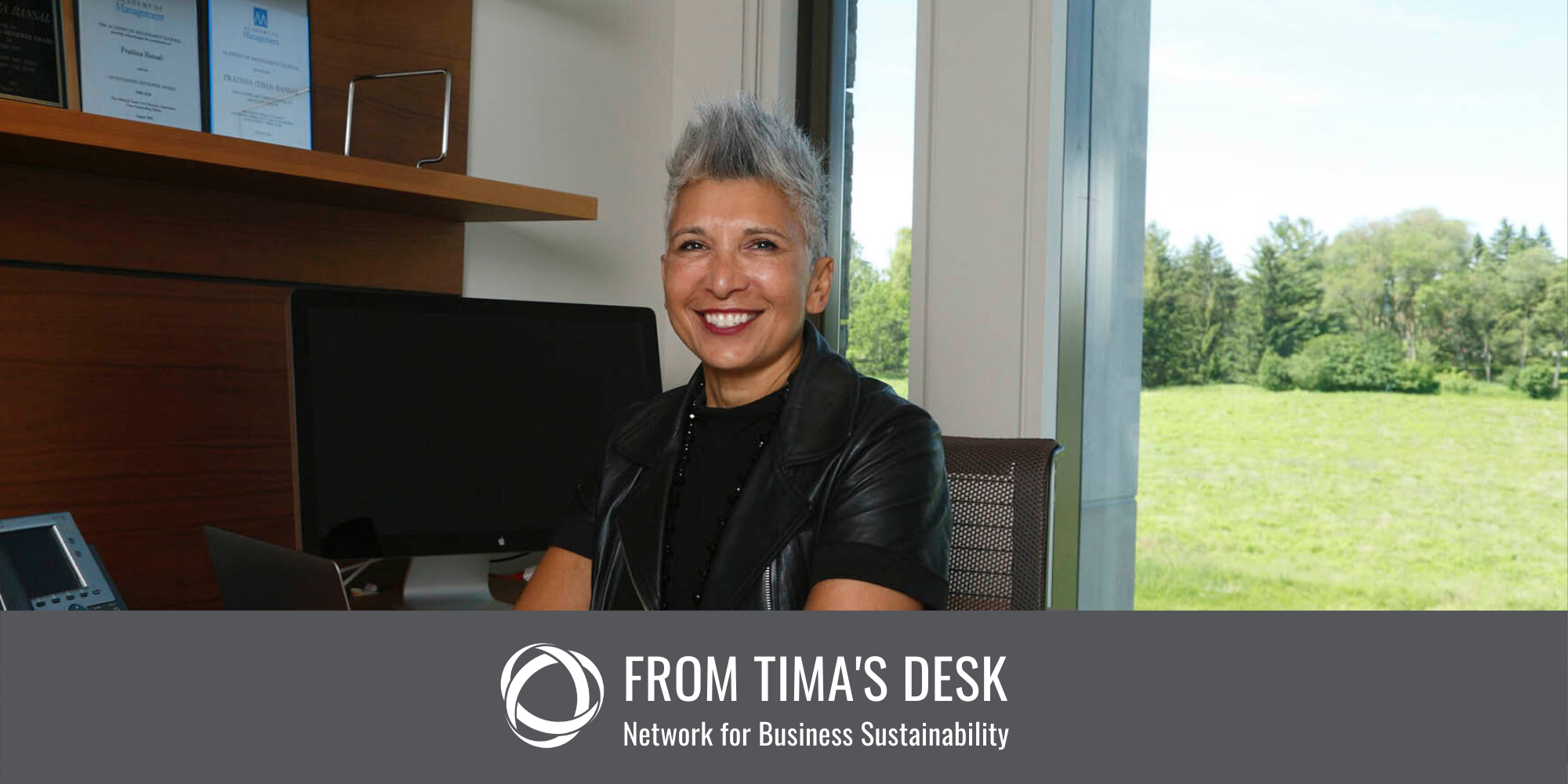Business growth may be the problem, but attacking growth is not the solution.
Dr. Tima Bansal is Founder of the Network for Business Sustainability.
Several years ago, I asked each participant in an executive program in which I was teaching: “What is your company’s growth target next year?” Almost every one of them reported a number close to 10 per cent. I was impressed by their ambition, yet terrified by the aggregated consequences.
Growth is at the heart of the business model. Shareholders expect ever-increasing share prices, which are best achieved by growing the business. Every business function — marketing, operations, finance, and even human resources — focuses on some aspect of growth and productivity. Increasing the top line helps to improve the bottom line.
But, there is a simple problem with this type of thinking. If each business grows, then collectively, business will reach planetary limits. In 1972, Donella Meadows and her colleagues predicted these limits to growth in their book with the same title. Through a computer simulation, they illustrated that exponential growth will lead to the collapse of a closed system with finite resources.
And, there are certainly indications that we are reaching the planet’s limits to growth. The stories in the popular press are coming with increasing frequency and urgency. Here are just a few headlines about systems collapse.
-
Plummeting insect numbers ‘threaten collapse of nature’, The Guardian, Feb 10, 2019
-
One million species to go extinct ‘within decades’, Al Jazeera, May 6, 2019
-
David Attenborough warns climate change could lead to collapse of society: ‘We are running out of time’, Newsweek, April 18, 2019
Now, some might see this as fearmongering to grab public attention or a collective panic that is seizing society. But, I believe otherwise.
I believe that we are facing the grim realities of the physical limits to growth because the planet cannot absorb all the stuff that we are dumping. The impact of all our waste is suffocating the land, water, air. If we have reached the planetary limits, then the future for business and society is pretty dire… unless we quickly find a new way of thinking about business.
How Do We Change Business if Growth is in its DNA?
So, what to do about it? The people who advocate for sustainability propose two solutions, both of which are problematic.
First, many people in the sustainability movement are advocating for degrowth among businesses. They argue that business cannot continuously produce more stuff, so the solution is that businesses need to shrink, not grow.
Yet, asking companies to limit their growth, much less to degrow, works against the DNA of business. Businesses are programmed to grow. CEOs would lose their job if they advocated for degrowth. Few CEOs of shareholder-owned companies could aspire to degrowth.
A second approach advocated by the sustainability movement is to increase the ‘size of the pie’ rather than ‘split the pie.’ These optimists argue that business growth can be decoupled from business impact, so that businesses can continue to produce more stuff, while reducing their environmental and societal impact. Michael Porter and Mark Kramer call this ‘shared value’ in their often cited Harvard Business Review article.
Paul Polman, the former CEO of Unilever and hero of the sustainability movement, also argued that businesses could decouple growth from sustainability. Unilever’s 2010 Sustainable Living Plan aimed to double revenues, while halving the environmental footprint. Similarly, many companies focus on improving their carbon intensity (reducing carbon emitted for each unit of production).
However, this argument is also flawed. Even if each company reduces its footprint per output, the collective footprint would still increase if organizations seek to produce more output. A growth paradigm would ultimately lead to a larger footprint, even if firms seek shared value.
As long as businesses strive for bigger, faster, better, they will ultimately seek to produce more stuff, even if they do so more efficiently.
A Potential Solution: The Circular Economy
Changing a firm’s DNA is a fool’s ambition. Growth is embedded too deeply in corporate frameworks and executives’ mindsets. What we need to do is rethink how the broader system can accommodate business growth.
I think the answer lies in the circular economy. The waste from a company’s operations serves as feedstock for another.
This approach isn’t simply reusing or recycling, it requires rethinking. It provides an opportunity for new products with new chemical formulations that can be repurposed. New supply chain relationships will form and new businesses will spring up.
The limits to growth are due to finite resource constraints. But, once waste is seen as a resource, then the resources will become unlimited.
There are numerous challenges in making this model work. For example, the very large amounts of energy required need to come almost exclusively from renewable resources. But this, again, represents a business opportunity.
There is much more to say about the circular economy, but I’ll leave this for another post. For the moment, I want to reinforce the main point: business growth may be the problem, but the solution is not in fixing the growth paradigm. The solution is to embrace the growth paradigm and rethink organizational processes.
Continuing the Conversation
As always, I welcome your reactions. Please feel free to message me (@TimaBansal, tbansal@ivey.ca) or the NBS community (@NBSnet) privately or publicly.
More From Tima’s Desk
Dr. Tima Bansal, NBS’s Founder, regularly shares her observations about business sustainability. Click the button below to see the full series.




Add a Comment
This site uses User Verification plugin to reduce spam. See how your comment data is processed.This site uses User Verification plugin to reduce spam. See how your comment data is processed.